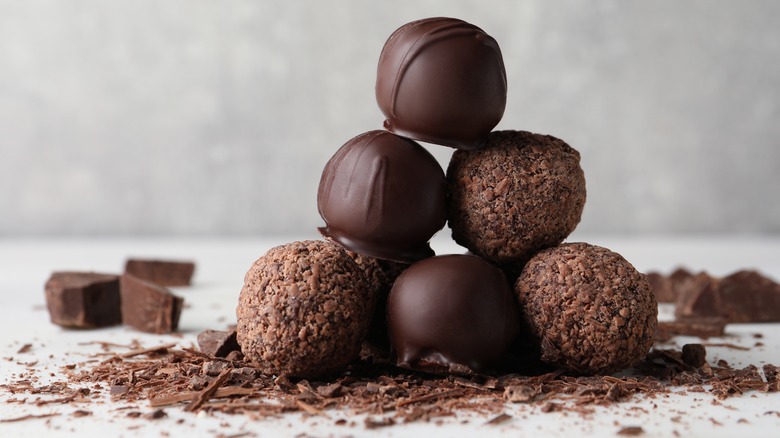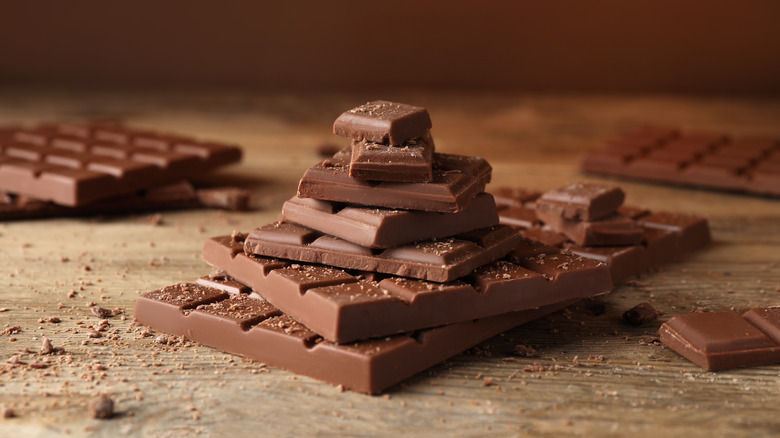Why High-Quality Chocolate Is Vital When Making Cheesecake Truffles
Cheesecake truffles — such as Tasting Table's dark chocolate raspberry cheesecake truffles — can be the ultimate dessert. Who wouldn't love a bite sized treat of creamy, chocolatey cheesecake? Usually, with a recipe like this, there aren't a ton of ingredients that go into it, so it's important to use high quality ingredients — especially the chocolate.
Recipe developer Katie Rosenhouse advises, "High quality chocolates tend to have more cocoa butter in mix, leading to a better mouthfeel and chocolate that will more easily coat the cheesecake filling." When it comes to truffles, you can really use any type of chocolate that you prefer — milk, dark, extra dark — so you can really play into your own personal tastes with this kind of recipe. With that in mind, it only makes the most sense to opt for high quality chocolate — especially since chocolate is one of the key ingredients here — so that you end up with the most decadent, enjoyable dessert possible.
By now, you're probably convinced that you need to skip the mediocre chocolate and invest in the high quality stuff — but how do you determine the quality of chocolate?
How to look for high quality chocolate
When buying chocolate, look at the ingredient list and follow one simple rule: the fewer ingredients, the better. If there are a multitude of unnecessary added ingredients, then it's a sign that the chocolate was not made well (and thus needed the extra ingredients to taste good).
Additionally, when it comes to buying dark chocolate, specifically, you'll want to pay close attention to the cocoa percentage. High quality dark chocolate will have a percentage of 65% or higher (from there, you should choose based on your own preferences). But if it's lower than 65%, it has too much added sugar for the requirements of dark chocolate. For reference, milk chocolate typically contains between 35% and 55% cocoa mass (with the legal minimum being 10% in the US), so if dark chocolate has less than 65% cocoa, it's approaching milk chocolate territory.
After you open a bar of chocolate, know the signs to look for. The chocolate should have a shine to its exterior — if there are any white or gray streaks, the chocolate may have not been stored properly. As for the smell, the chocolate should smell, well, very chocolatey; if you're picking up more vanilla, or some other ingredient, then that's a bad sign. You can also test the chocolate by breaking or chopping it — it should break cleanly, not crumble. Finally, when you taste it, the chocolate should feel smooth and creamy — if it's waxy or chewy, it's bad chocolate.

